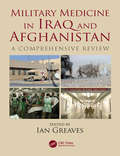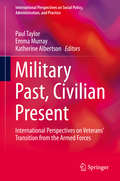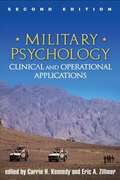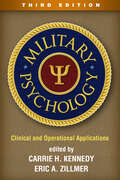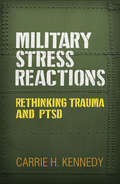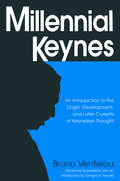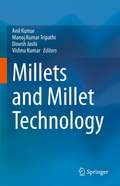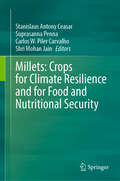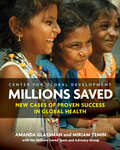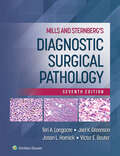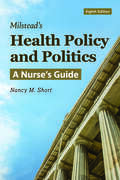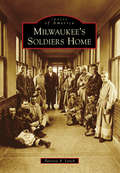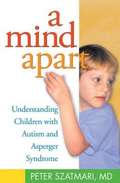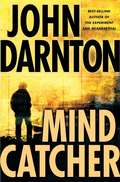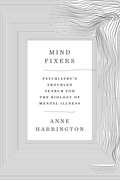- Table View
- List View
Military Medicine in Iraq and Afghanistan: A Comprehensive Review
by Ian GreavesMany, if not most, of the recent improvements in trauma care in civilian practice have developed from military experience. The British Defence Medical Services have been recognised as providers of exemplary health care. Although there will is an emphasis on trauma, this book also captures lessons from internal medicine and infectious disease, ethics (for example dealing with detainees – a particularly controversial subject), human factors, mental health issues and rehabilitation. <P><P>Military Medicine provides the evidence and context for these innovations, and its unique and important account will be of interest to both military and civilian practitioners alike.
Military Past, Civilian Present: International Perspectives on Veterans' Transition from the Armed Forces (International Perspectives on Social Policy, Administration, and Practice)
by Paul Taylor Emma Murray Katherine AlbertsonThis edited book presents a synthesis of current international knowledge on the topic of military veteran transition to civilian life. Understanding the transition of individuals from military institutions to civilian life is of great importance. The essential elements of transition support are currently widely debated in order to assess current practice and potential shortcomings in the intention to improve health, welfare and social outcomes for military veterans. This text links original research and critical commentary to public policy and practice in the area of veteran transition. Doing so through a collection of international perspectives assists in locating continuity and difference between strategies, agendas and the realities of what is actually known of the veteran’s experience. Chapters in this text examine the subject of transition along lines of enquiry that focus in on themes such as social justice, veteran identity and developments in transition agendas. Globally, many veterans face complex social issues such as low income, barriers to employment, and problems of health and welfare. Chapters take stock of the real-world issues affecting veterans and at the same time casts a critical eye over the limitations in accessing, or denial of access to opportunities, support and remedy. The veteran identity is an important dimension of enquiry here. This book looks at the relational factors between the veteran and the public, the creation of a master status and the challenges faced by veterans in transitioning into a cultural context that is saturated with imagery of what a veteran ‘is’. Chapters also seek to pose recommendations as to how the policy and practice agenda that surrounds veterans and the bridging of the gap between military and civilian life may be developed. Here authors point towards the value of knowledge, research and analysis that is underpinned by participatory strategies with veterans themselves. For example, seeking to establish lines of enquiry that value the voice of veterans as an ongoing and iterative dimension of developing understanding.
Military Psychology, Second Edition
by Eric A. Zillmer Carrie KennedyWidely regarded as the authoritative reference in the field, this book comprehensively explores the psychological needs of today's service members and how to meet them effectively. Expert contributors review best practices for conducting fitness-for-duty evaluations and other types of assessments, treating frequently encountered clinical problems, responding to disasters, and promoting the health and well-being of all personnel. The book also examines the role of mental health professionals in enhancing operational readiness, with chapters on crisis and hostage negotiation, understanding terrorists, and more. New to This Edition The latest scientific knowledge, clinical interventions, and training recommendations. Chapter on acute combat stress. Chapter on post-deployment problems, including PTSD and depression. Chapter on military psychology ethics. Coverage of blast concussion screening and evaluation.
Military Psychology, Third Edition: Clinical and Operational Applications
by Carrie H. Kennedy and Eric A. ZillmerWith more than 60% new material reflecting advances in evidence-based treatments and the evolving roles of military mental health providers, the authoritative resource in the field is now in a significantly revised third edition. The volume provides research-based roadmaps for prevention and intervention with service members and veterans in a wide range of settings. Up-to-date information about military procedures and guidelines is included throughout. Grounded in current knowledge about stress and resilience, chapters describe best practices in treating such challenges as depression, anxiety disorders, posttraumatic stress disorder, and substance use disorders. Also addressed are operational functions of psychologists in personnel assessment and selection, counterintelligence, and other areas. New to This Edition *Chapters on new topics: the spectrum of military stress reactions, concussion management, military sexual assault, embedded/expeditionary psychological practice, and security clearance evaluations. *Fully rewritten chapters on evidence-based treatments, behavioral health in primary care, and disaster mental health. *Incorporates major shifts in how and where military mental health services are delivered.
Military Strategies for Sustainment of Nutrition and Immune Function in the Field
by Institute of MedicineEvery aspect of immune function and host defense is dependent upon a proper supply and balance of nutrients. Severe malnutrition can cause significant alteration in immune response, but even subclinical deficits may be associated with an impaired immune response, and an increased risk of infection. Infectious diseases have accounted for more off-duty days during major wars than combat wounds or nonbattle injuries. Combined stressors may reduce the normal ability of soldiers to resist pathogens, increase their susceptibility to biological warfare agents, and reduce the effectiveness of vaccines intended to protect them. There is also a concern with the inappropriate use of dietary supplements.This book, one of a series, examines the impact of various types of stressors and the role of specific dietary nutrients in maintaining immune function of military personnel in the field. It reviews the impact of compromised nutrition status on immune function; the interaction of health, exercise, and stress (both physical and psychological) in immune function; and the role of nutritional supplements and newer biotechnology methods reported to enhance immune function.The first part of the book contains the committee's workshop summary and evaluation of ongoing research by Army scientists on immune status in special forces troops, responses to the Army's questions, conclusions, and recommendations. The rest of the book contains papers contributed by workshop speakers, grouped under such broad topics as an introduction to what is known about immune function, the assessment of immune function, the effect of nutrition, and the relation between the many and varied stresses encountered by military personnel and their effect on health.
Military Stress Reactions: Rethinking Trauma and PTSD
by Carrie H. KennedyMany people--including some mental health professionals and service members themselves--have the misconception that military deployment is highly likely to cause posttraumatic stress disorder (PTSD). This book gives practitioners a more nuanced understanding of military stress reactions and related mental health concerns, from transient adjustment problems to clinical disorders. Drawing on expert knowledge of military environments and culture, Carrie H. Kennedy provides vital guidance for evidence-based assessment, intervention, and prevention. Kennedy emphasizes that overdependence on the diagnosis of PTSD can lead to suboptimal care, and shows how to tailor treatment to each service member's or veteran's needs. A crucial addition to any practitioner's library, the book is illustrated with numerous case vignettes.
Milk: Its Remarkable Contribution to Human Health and Well-being
by Stuart PattonMilk is the one food that sustains life and promotes growth in all newborn mammals, including the human infant. By its very nature, milk is nutritious. Despite this, it has received surprisingly little attention from those interested in the cultural impact of food. In this fascinating volume, Stuart Patton convincingly argues that milk has become of such importance and has so many health and cultural implications that everyone should have a basic understanding of it. This book provides this much-needed introduction. Patton's approach to his subject is comprehensive. He begins with how milk is made in the lactating cell, and proceeds to the basics of cheese making and ice cream manufacture. He also gives extensive consideration to human milk, including breasts, lactation, and infant feeding. Pro and con arguments about the healthfulness of cows' milk are discussed at length and with documentation. Patton explores the growing gap between the public's impressions of milk, and known facts about milk and dairy foods. He argues that the layperson's understanding of milk has deteriorated as a result of propaganda from activists anxious to destroy milk's favorable image, misinformation in the media, and scare implications from medical research hypotheses.
Milk: The Biology of Lactation
by Jay Schulkin Michael L. PowerEverything you ever wanted to know about the substance that binds all mammals together.After drawing its first breath, every newborn mammal turns his or her complete attention to obtaining milk. This primal act was once thought to stem from a basic fact: milk provides the initial source of calories and nutrients for all mammalian young. But it turns out that milk is a much more complicated biochemical cocktail and provides benefits beyond nutrition. In this fascinating book, biologists Michael L. Power and Jay Schulkin reveal this liquid’s evolutionary history and show how its ingredients have changed over many millions of years to become a potent elixir. Power and Schulkin walk readers through the early origins of the mammary gland and describe the incredible diversification of milk among the various mammalian lineages. After revealing the roots of lactation, the authors describe the substances that naturally occur in milk and discuss their biological functions. They reveal that mothers pass along numerous biochemical signals to their babies through milk. The authors explain how milk boosts an infant’s immune system, affects an infant’s metabolism and physiology, and helps inoculate and feed the baby’s gut microbiome. Throughout the book, the authors weave in stories from studies of other species, explaining how comparative research sheds light on human lactation. The authors then turn their attention to the fascinating topic of cross-species milk consumption—something only practiced by certain humans who evolved an ability to retain lactase synthesis into adulthood. The first book to discuss milk from a comparative and evolutionary perspective, Power and Schulkin’s masterpiece reveals the rich biological story of the common thread that connects all mammals.
Millennial Biology: The National Science Foundation and American Biology, 1975-2005
by Donald J. McGrawNational Science Foundation (NSF) is a unique federal agency because it supports scientific research financially, but does not engage in scientific work itself. Its history is known only in part because the NSF is a vibrant, expanding, and living entity that makes the final telling of its story impossible. Much can be learned from its beginning as well as its component parts. If the founding of the NSF in 1950 was couched in an era of physics, especially atomic physics, certainly by the end of the 20th century and the beginning of the 21st, biology was, and remains, the queen of sciences for the predictable future. This book highlights the elite status of America’s biological sciences as they were funded, affected, and, to a very real degree, interactively guided by the NSF. It examines important events in the earlier history of the Foundation because they play strongly upon the development of the various biology directorates. Issues such as education, applied research, medical science, the National Institutes of Health, the beginnings of biotechnology, and other matters are also discussed.
Millennial Keynes: The Origins, Development and Future of Keynesian Economics
by Bruno Ventelou Gregory P. NowellBoth a grounding in the origins and development of Keynesian economics, this study also looks at the ongoing significance of his work. It examines the different interpretations of Keynsian thought on economics as a discipline and the schools of thought that provided these interpretations.
Millets and Millet Technology
by Anil Kumar Manoj Kumar Tripathi Dinesh Joshi Vishnu KumarMillets are small-grained, annual, warm weather cereal. The millets offer both nutritional and livelihood security of human population and fodder security of diverse livestock population in dryland region of India. Millets are highly nutritious, they are known as health foods especially for control of diabetes and mineral deficiencies. One of the major factors for declining consumption of millets is the lack of awareness of their nutritive value and inconvenience of their preparation. This book covers both, chemistry and novel technology for millet processing and development. It summarizes the latest information on millets, their nutritional and health benefits, historical perspective, utilization, R&D efforts, present status and the importance being given by policy makers for promoting millets for sustainable agriculture and healthy society. The book is compiled by various experts keeping in view syllabi of different research institutions, researchers, students as well requirement of the industry. It will serve as instructional material for researchers in food science, microbiology, process engineering, biochemistry, biotechnology and reference material for those working in industry and R & D labs.
Millets: Crops for Climate Resilience and for Food and Nutritional Security
by Shri Mohan Jain Suprasanna Penna Stanislaus Antony Ceasar Carlos W. Piler CarvalhoThis edited volume discusses each millet, its climate resilience and nutrition supplementation properties in detail and help to understand and think forward the future studies. Millets, often called Nutri-cereals, are easily digestible, gluten-free, having low glycemic index, and are high in antioxidants. The ever-changing global climate and water shortages also direct humans to look for alternative food for stable cereals like rice. Millets are a good fit for harsh climates, especially water and fertilizer shortages. The major reasons for decrease in the consumption of millets are the lack of production techniques, lack of awareness of nutritional merits and lack of processing technologies of millets. It has become imperative to reorient the efforts on the millets crop to generate demand through value-addition of processed foods, nutritional evaluation and creation of awareness, so that human and animal health can be maintained sustainably. Millets have the potential nutritional, pharmaceutical properties that fulfill the requirement of the habitat, and obviate dependence on major food crops. Millets will become alternative crops to feed ever-growing new mouth to feed. This book provides a comprehensive source of theoretical and practical updates about climate resilience and the nutrition supplementation roles of millets. It also covers the production, marketing, and value-added product development of millets. This book is a valuable resource for scientists, teachers, agriculturists, capacity builders, the food industry, and policymakers and will serve as additional reading material for undergraduate and postgraduate students of life science.
Millions Saved: New Cases of Proven Success in Global Health
by Amanda Glassman Miriam TeminOver the past fifteen years, people in low- and middle-income countries have experienced a health revolution-one that has created new opportunities and brought new challenges. It is a revolution that keeps mothers and babies alive, helps children grow, and enables adults to thrive. Millions Saved: New Cases of Proven Success in Global Health chronicles the global health revolution from the ground up, showcasing twenty-two local, national, and regional health programs that have been part of this global change. The book profiles eighteen remarkable cases in which large-scale efforts to improve health in low- and middle-income countries succeeded, and four examples of promising interventions that fell short of their health targets when scaled-up in real world conditions. Each case demonstrates how much effort-and sometimes luck-is required to fight illness and sustain good health.The cases are grouped into four main categories, reflecting the diversity of strategies to improve population health in low-and middle-income countries: rolling out medicines and technologies; expanding access to health services; targeting cash transfers to improve health; and promoting population-wide behavior change to decrease risk. The programs covered also come from various regions around the world: seven from sub-Saharan Africa, six from Latin America and the Caribbean, five from East and Southeast Asia, and four from South Asia.
Mills and Sternberg's Diagnostic Surgical Pathology: .
by Teri A LongacreComprehensive and practical, Mills and Sternberg’s Diagnostic Surgical Pathology, 7th Edition, presents advanced diagnostic techniques for differential diagnosis of the surgical specimen and the latest information on all currently known diseases. Led by Drs. Teri A. Longacre, Joel K. Greenson, Jason, L. Hornick, and Victor E. Reuter, a virtual “who’s who” of experts in the field provide authoritative guidance on the diagnostic evaluation of every type of specimen from every anatomic site. Visually stunning and thoroughly up to date, this classic two-volume reference is a must-have resource no matter what your level of training or expertise.
Milstead's Health Policy & Politics
by Nancy M. ShortMilstead's Health Policy & Politics: A Nurse's Guide, Seventh Edition is focused on policy-making and the impact it has on nursing and healthcare.
Milstead's Health Policy and Politics: A Nurse's Guide
by Nancy M. ShortUS health policy changes rapidly as legislation and case law change. However, the policy process does not. Milstead's Health Policy and Politics: A Nurse's Guide, Eighth Edition focuses on the policymaking process and the impact it has on nursing and healthcare. It is an excellent resource for nursing students as it encompasses the entire health policy process from agenda setting through policy and program evaluation. The author and interprofessional team of contributors interpret past events to help readers develop the knowledge, skills, and abilities necessary to influence health policy in the US. The updated Eighth Edition features a new chapter on community engagement and education in regard to policy process, along with new Spotlights and Case Studies throughout. It also includes new sections on current topics, including types of Media and the Role of AI in Media, EHR as an important source of big data, Research as a Driver of Agendas, The Foundations for Evidence-Based Policymaking Act of 2018, and more. With Milstead's Health Policy and Politics: A Nurse's Guide, Eighth Edition, students will understand the policymaking process and have the confidence knowing they can play a role in shaping US health policy. Presents a targeted focus on the policy process and where nurses can begin to effect policy changes. Provides concrete examples of real-life situations that help students understand the link between nursing, policy theory, and political action. Features Case studies and Discussion Points in every chapter to explain the policy process in plain language. Every new copy is packaged with Navigate Premier Access featuring the complete eBook, Interactive Lectures, Slides in PowerPoint format, Case Studies, and Discussion Questions. Instructor resources include an Instructor's Manual, Syllabus, Competency Mapping, Answer Keys to the Case studies and Discussion Questions, Test Bank, and Sides in PowerPoint format. Health Policy Health Policy & Finance © 2026 | 350 pages
Milwaukee's Soldiers Home (Images of America)
by Patricia A. LynchAs the country sought healing and peace after the Civil War, Wisconsin citizens took up Pres. Abraham Lincoln's challenge "to care for him who shall have borne the battle." Their efforts paved the way for the establishment in Milwaukee of one of the original three branches of the National Asylum for Disabled Volunteer Soldiers. In May 1867, the first 60 veterans, including a musician from the War of 1812, moved to a single building on 400 rolling acres west of Milwaukee. By the end of the 19th century, the bustling campus boasted its own hospital, chapel, library, theater, and recreation hall, in addition to the grand main building. Subsequent wars and military conflicts created a need for additional buildings and services. Designated a National Historic Landmark in 2011, the campus continues to offer a healing environment for today's patients and stands as a testimony to advances in veteran health care.
Mimi's Village: And How Basic Health Care Transformed It (CitizenKid)
by Eugenie Fernandes Katie Milway<p>In this fictionalized story about a real humanitarian problem facing many countries in the developing world today, readers meet Mimi, an ordinary girl from an ordinary family in Africa. When her younger sister, Nakkissi, gets very sick after drinking unsterilized water from the stream, Mimi learns firsthand how quickly things can go terribly wrong. With no health care provider close by, her whole family must travel on foot to a nearby village to see the one nurse who can provide the medical care her sister desperately needs. Though Mimi is relieved when her sister recovers, she wishes they could get a health clinic in her own village. Several months later, it is Mimi herself who becomes the catalyst to make her wish come true. <p>Author Katie Smith Milway, a former aid worker in Africa, has written the best kind of global education book for children, filled with information that engenders empathy and understanding. The picture-book format with captivating artwork by award-winning illustrator Eugenie Fernandes brings Mimi's story to life. Along with further information, a glossary and a map, an addendum includes suggestions for how young children can get involved, highlighting how inexpensive, easy-to-make improvements can transform people's lives. This terrific book would find many uses in elementary classrooms, including lessons on African culture, African family life and the basic health care needs of people everywhere. Most important, it offers opportunities for inspiring discussions about compassion, volunteerism and making a difference in one's own community and the larger world community.</p>
Mind Apart
by Peter SzatmariWhy would a child refuse to talk about anything but wasp wings-or the color of subway train doors? What does it mean when a nine-year-old asks questions about death hundreds of times a day? And how can parents build a close relationship with a little girl who hates to be touched? In this compassionate book, leading autism authority Dr. Peter Szatmari shows that children with autism spectrum disorders act the way they do because they think in vastly different ways than other people. Dr. Szatmari shares the compelling stories of children he has treated who hear everyday conversation like a foreign language or experience hugs like the clamp of a vise. Understanding this unusual inner world-and appreciating the unique strengths that thinking differently can bestow-will help parents relate to their children more meaningfully, and make the "outer world" a less scary place.
Mind As Mosaic: The Robot In The Machine
by Bruce H. HinrichsMind as Mosaic: The Robot in the Machine is a beguiling introduction to how the mind is created by the brain. With clarity, humor and poetry, Mind as Mosaic mixes history, biology, philosophy, artificial intelligence, and psychology in fresh, cutting-edge and insightful reading.People who drill holes in their heads, cannibals, electrical stimulation of brains, people who are blind but don't know it, and other absorbing and intriguing wonders are presented and explained in an uncompromisingly honest style that is compelling and accessible.Packed with startling and riveting examples and clear explanations of how the mind is robotically formed by brain processes, Mind as Mosaic is science wrapped in humanity, facts laced with wit, philosophy in a white laboratory coat. The subject is not only fun, it is profound.
Mind Catcher
by John Darnton13-year-old Tyler lies in a hospital, his brain damaged in an accident. Two doctors use their experiments to send Tyler far beyond medical science...
Mind Fixers: Psychiatry's Troubled Search For The Biology Of Mental Illness
by Anne HarringtonMind Fixers tells the history of psychiatry’s quest to understand the biological basis of mental illness and asks where we need to go from here. <P><P> In Mind Fixers, Anne Harrington, author of The Cure Within, explores psychiatry’s repeatedly frustrated struggle to understand mental disorder in biomedical terms. She shows how the stalling of early twentieth century efforts in this direction allowed Freudians and social scientists to insist, with some justification, that they had better ways of analyzing and fixing minds. But when the Freudians overreached, they drove psychiatry into a state of crisis that a new “biological revolution” was meant to alleviate. Harrington shows how little that biological revolution had to do with breakthroughs in science, and why the field has fallen into a state of crisis in our own time. <P><P>Mind Fixers makes clear that psychiatry’s waxing and waning biological enthusiasms have been shaped not just by developments in the clinic and lab, but also by a surprising range of social factors, including immigration, warfare, grassroots activism, and assumptions about race and gender. Government programs designed to empty the state mental hospitals, acrid rivalries between different factions in the field, industry profit mongering, consumerism, and an uncritical media have all contributed to the story as well. <P><P>In focusing particularly on the search for the biological roots of schizophrenia, depression, and bipolar disorder, Harrington underscores the high human stakes for the millions of people who have sought medical answers for their mental suffering. This is not just a story about doctors and scientists, but about countless ordinary people and their loved ones. A clear-eyed, evenhanded, and yet passionate tour de force, Mind Fixers recounts the past and present struggle to make mental illness a biological problem in order to lay the groundwork for creating a better future, both for those who suffer and for those whose job it is to care for them.
Mind Fuel: Simple Ways to Build Mental Resilience Every Day
by Bear GryllsThe world's most recognised adventurer Bear Grylls offers daily tips to help you build mental resilience.Bear Grylls draws on his survival experience to share the principles that have helped him overcome fear, develop a positive mindset and break through the obstacles that limit success in everyday life. With emotional health advocate Will Van Der Hart, MIND FUEL offers you practical insights to help you to increase your resilience, combat stress and live life with confidence.Topics are categorised into eight broader themes at enable you to access the material you need most - covering wisdom, battles, motivation, courage, relationships, self-care, spirituality and determination. From the bestselling author of Mud, Sweat and Tears, MIND FUEL gives you a whole year's worth of guidance to face whatever life throws at you.(P) 2022 Hodder & Stoughton Limited
Mind Fuel: Simple Ways to Build Mental Resilience Every Day
by Bear GryllsThe world's most recognised adventurer Bear Grylls offers daily tips to help you build mental resilience.Bear Grylls draws on his survival experience to share the principles that have helped him overcome fear, develop a positive mindset and break through the obstacles that limit success in everyday life. With emotional health advocate Will Van Der Hart, MIND FUEL offers you practical insights to help you to increase your resilience, combat stress and live life with confidence. Topics are categorised into eight broader themes at enable you to access the material you need most - covering wisdom, battles, motivation, courage, relationships, self-care, spirituality and determination. From the bestselling author of Mud, Sweat and Tears, MIND FUEL gives you a whole year's worth of guidance to face whatever life throws at you.
Mind Fuel: Simple Ways to Build Mental Resilience Every Day
by Bear GryllsThe world's most recognised adventurer Bear Grylls offers daily tips to help you build mental resilience.Bear Grylls draws on his survival experience to share the principles that have helped him overcome fear, develop a positive mindset and break through the obstacles that limit success in everyday life. With emotional health advocate Will Van Der Hart, MIND FUEL offers you practical insights to help you to increase your resilience, combat stress and live life with confidence. Topics are categorised into eight broader themes at enable you to access the material you need most - covering wisdom, battles, motivation, courage, relationships, self-care, spirituality and determination. From the bestselling author of Mud, Sweat and Tears, MIND FUEL gives you a whole year's worth of guidance to face whatever life throws at you.
